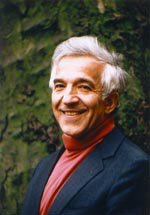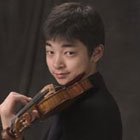J. Sibelius, Symphonies, Tone Poems, Violin Concerto, V. Ashkenazy / Philharmonia, BSO |
 Once again the NSO played to a worryingly number of empty seats – despite the luminary conductor at the helm. It’s a common enough sight by now – but with virtually all cultural institutions in the area struggling financially and the BSO, as reported, already canceling some Strathmore appearances (admittedly the odd and silly crossover performances only, so far) we just hate to see lackluster audience responses. This is all the more frustrating since the NSO is batting a great average so far this season – and this concert nicely fit into that string of strong showings.
Once again the NSO played to a worryingly number of empty seats – despite the luminary conductor at the helm. It’s a common enough sight by now – but with virtually all cultural institutions in the area struggling financially and the BSO, as reported, already canceling some Strathmore appearances (admittedly the odd and silly crossover performances only, so far) we just hate to see lackluster audience responses. This is all the more frustrating since the NSO is batting a great average so far this season – and this concert nicely fit into that string of strong showings. In the Sibelius Concerto in D Minor for Violin and Orchestra, op. 47, one of the most challenging of the major concertos, Ryo Goto (not to be mistaken for the midfielder from Japanese Thepsa Kusatsu FC) displayed violin playing that should ensure that in the future, Washington audiences won’t have to have him marketed to them as “the younger brother” of someone else. Goto sings with a controlled, wonderfully smooth, and gentle tone. A tone as though he was playing for and to himself rather than the audience in a large hall – which is meant to be a descriptive comment, not criticism, because it allowed for a truly pleasant and relaxed way to be drawn into the music rather than having it thrown at us. All that worked very well with the continued excellence of the orchestra’s sensitive support for the soloist. Ryo Goto may not have the incredibly assured and mature way with soft violin playing that Znaider awed with recently – not yet, at any rate. But the quality and sensibility were very notable. He set the foundation for the success that the performance was, but it could not have taken off as it did had he not had such a congenial partner in crime as Ashkenazy. Only in the finale (Allegro ma non tanto) was some of the subtlety lost as soloist and orchestra hurtled to the finish line. (Ryo Goto's first CD under a newly signed contract with Deutsche Grammophon is now available in the U.S. as a Japanes import.)
In the Sibelius Concerto in D Minor for Violin and Orchestra, op. 47, one of the most challenging of the major concertos, Ryo Goto (not to be mistaken for the midfielder from Japanese Thepsa Kusatsu FC) displayed violin playing that should ensure that in the future, Washington audiences won’t have to have him marketed to them as “the younger brother” of someone else. Goto sings with a controlled, wonderfully smooth, and gentle tone. A tone as though he was playing for and to himself rather than the audience in a large hall – which is meant to be a descriptive comment, not criticism, because it allowed for a truly pleasant and relaxed way to be drawn into the music rather than having it thrown at us. All that worked very well with the continued excellence of the orchestra’s sensitive support for the soloist. Ryo Goto may not have the incredibly assured and mature way with soft violin playing that Znaider awed with recently – not yet, at any rate. But the quality and sensibility were very notable. He set the foundation for the success that the performance was, but it could not have taken off as it did had he not had such a congenial partner in crime as Ashkenazy. Only in the finale (Allegro ma non tanto) was some of the subtlety lost as soloist and orchestra hurtled to the finish line. (Ryo Goto's first CD under a newly signed contract with Deutsche Grammophon is now available in the U.S. as a Japanes import.)Ravel’s Le Tombeau du Couperin took its orchestral shape after intermission. Thanks to Michael Round’s orchestrations of the two movements that Ravel did not adapt from piano to orchestral score all six parts were to be heard. In the Round completion the movements are back in the order of the original work... a work that had pianists curse for almost 90 years as it contains very small sections that are among the most difficult to get right in the piano literature. It is entertaining and wispy music and was delicately performed; with wit more important than perfection. There are not many composers that were better at adapting and orchestrating piano music than Ravel, and Le Tombeau surely stands on its own as an orchestral piece. It is not, however, the kind of improvement (I hesitate to call it “improvement,” even though we all know it’s true) over the original as his working-over of Pictures at an Exhibition is. In fact, since there was a Vladimir Ashkenazy in the house already, I would not have minded a little solo of the original on his part, at all. The Toccata that Mr. Round added and which concludes Le Tombeau in this guise must be said to have been a most worthy addition and apt orchestration.
To see the music of Albert Roussel on the program always delights me. Ever since I found out about this composer (initially – and way too late – through Robert R. Reilly’s “Surprised by Beauty”), I’ve been looking for snippets of his work in concert halls. It usually ends up being the second suite of Bacchus & Ariane, notwithstanding that saying ‘usually’ is an exaggeration. The last time the Washington audience heard this, Roussel’s most often performed orchestral piece of music, was 23 years ago. The Bacchus suite is, to put it into technical and refined terms, simply awesome. The most unusual combination of French character and real guts (sorry, France) gives it drive, rhythm, and mass without marching along in goose step. Don’t strain yourself, but try to imagine a hefty German who can dance. The performance was all that was needed to (hopefully) seed an appreciation of Roussel in the audience. Principal violist Daniel Foster shone in the solo of the suite’s opening.
Repeat performances take place today, Friday, and tomorrow, Saturday, at 8PM. Walk-ins welcome!